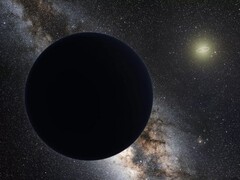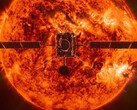Today, the solar system is made up of eight planets: Mercury, Venus, Earth, Mars, Jupiter, Saturn, Uranus and Neptune. And while some of you may have heard of Pluto, which has since been classified as a dwarf planet in 2006, researchers at Princeton's Institute for Advanced Study recently made a discovery that could change the solar system as we know it.
Exploring the archives of the Victor M. Blanco telescope in Chile and the Canada-France-Hawaii telescope based in Hawaii, researchers Sihao Cheng, Jiaxuan Li and Eritas Yang spotted a very slow-moving point. Indeed, with the help of 19 snapshots taken between 2011 and 2018, they were able to determine its size, which is 700 km in diameter.
But that's not all, as this new object, dubbed 2017 OF201, lies beyond Neptune's orbit. Its orbit - the trajectory it takes to revolve around the Sun - changes from 45 astronomical units to 1,600 AU, which is 1,600 times the distance between the Earth and the Sun. And it takes an average of 25,000 years to complete a full orbit.
However, it's not yet clear whether this new planet can be counted as a planet in the solar system. It falls into the category of dwarf planets and is located in the Kuiper Belt, 45 astronomical units from Neptune.
Nevertheless, Sihao Cheng, who made the discovery, believes that other similar objects are hidden in our solar system: "2017 OF201 spends only 1% of its orbital time close enough to us to be detectable. The presence of this single object suggests that there could be another hundred or so other objects with similar orbit and size; they are just too far away to be detectable now. Even though advances in telescopes have enabled us to explore distant parts of the universe, there is still a great deal to discover about our own solar system". We'll have to wait for further observations to find out more about this object and determine whether it's a new planet.
Source(s)
Futura-Science (in French), Institute for Advanced Study, arXiv











